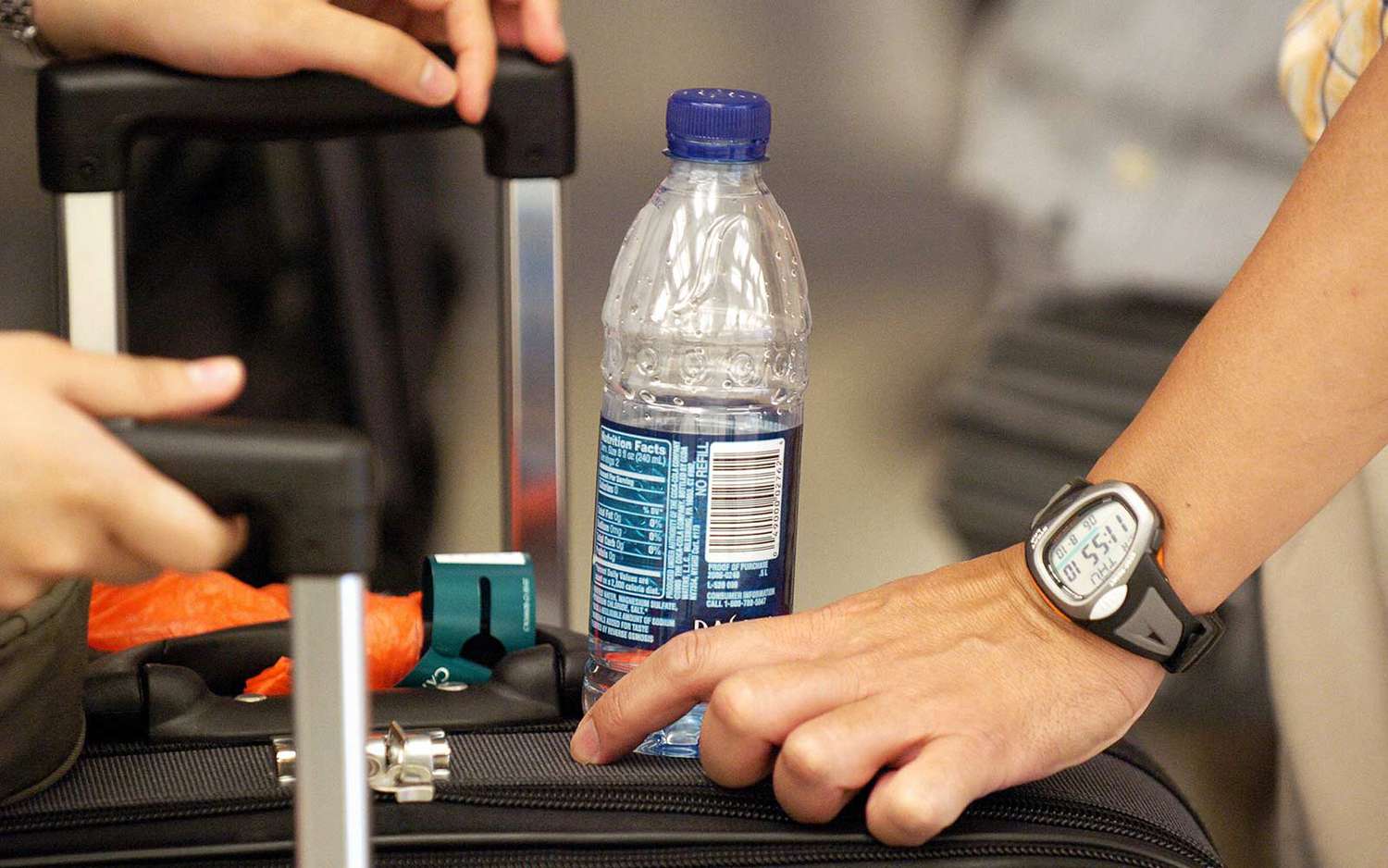One of the most common problems that travelers encounter at the airport is the inability to bring water past the security checkpoint. This rule is often puzzling to many people, as it may seem absurd to prevent people from having something as essential as water. Why is something as harmless as water not allowed through airport security? Especially when traveling is a relatively tiring activity. It may seem deranged to prohibit people from bringing such an important item past the airport, but this protocol is crucial in ensuring the safety of all passengers.
Why Water is Prohibited?
The reason why water is not allowed through airport security is that there are some explosive chemical liquids such as nitroglycerine, that are indistinguishable from water when looked at. These clear liquids are undetectable with the security X-ray and can act just like regular explosives, which would pose a great threat to airliners if brought on board.
Join us on TELEGRAM for the Latest Aviation Updates fresh to your phone.

Causes of this Policy
Following the 9/11 attacks in the United States, security officials were tremendously strict on air travel safety. The roots of the prohibition of water can be directly traced back to an incident in 2006 when surveillance cameras captured a terrorist drilling a hole into an unopened water bottle and filling it with explosive liquids. The uncovering of this dangerous plan prevented a possible aviation catastrophe, and after this incident, a ban on liquids entering the airport was created.
Liquid explosives, however, have been used before in history. For example, in 1994, a terrorist who would later have ties to the 9/11 attacks denoted liquid explosives onboard Philippines Airlines flight 434. The explosion subsequently killed 1 passenger and left a large hole in the aircraft.

Exceptions to the Rule
In most airports, containers with no more than 100ml, or 3.4 ounces, of liquids are still allowed through security. This is due to the fact that liquid explosives wouldn’t be able to cause an actual explosion in such a small volume. Another, less widely known exception is that water can be brought past security if it is frozen. Liquid explosives are unable to be frozen, so a frozen liquid brought past security is safe.

What if You Want to Drink Water Inside the Airport?
The ban on the water can be a huge hassle when one becomes thirsty at the airport. Past security, the only way to obtain a bottle of water is to buy one at an overpriced cost at a store. Those unwilling to spend such an amount of money on the water can bring an empty bottle past security and fill it up later at a water fountain. This method is usually the easiest way to stay hydrated when traveling.
Although the water prohibition precaution ensures that passengers are safe under the threat of liquid explosives, it is a huge inconvenience to thousands of travelers each day. Tons of unopened water bottles and clean water are wasted daily just for the slight possibility of someone carrying liquid explosives. Over the past years, there have been some innovations that have offered solutions to this problem. For example, some Japanese airports use a type of bottle solution detector that can scan liquids to identify if they are safe or not. However, the majority of airports in the world do not have this technology and still have to resort to the no-water policy. Perhaps more airports can adopt a similar type of technology in the future.
Sources
You might also like:
- In-flight meals over time
- Embraer Introduces Automatic Takeoff System for its E2 Jets
- Etihad Airways is in Early Talks with Airbus & Boeing for Widebody Aircraft
- Discover Your Dream Job in Aviation: A Guide to Launching Your Career in the Skies
- The Defiant X: Faster than a Black Hawk
Discover more from Aviation for Aviators
Subscribe to get the latest posts sent to your email.


Comments are closed.